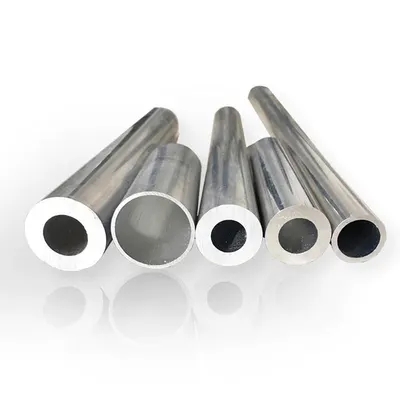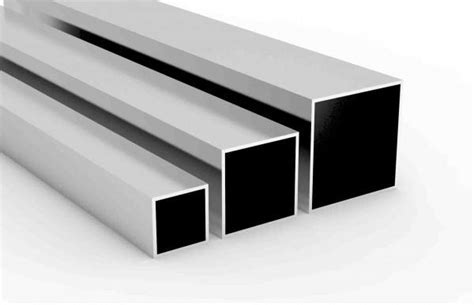How to Join Aluminum Tubing? A Complete Guide to Connectors, Welding, & Gluing

Joining aluminum tubing properly is critical for strong, lasting connections. Whether you are working on a home project, repairing a vehicle, or handling an industrial task, the way you join aluminum tubing directly affects the result. Aluminum is lightweight, resists corrosion, and offers good strength, but it requires specific methods to join.
This guide covers the key ways to join aluminum tubing: welding, gluing, and mechanical connectors. You will find clear, step-by-step instructions without unnecessary details. This will help you complete your projects with confidence and avoid common mistakes. Consider this your reliable resource for making solid aluminum tubing joints.
Related products: aluminum round tubes
Preparation Before Joining Aluminum Tubing
Measuring and Cutting Aluminum Tubing
Measure the tubing carefully. Use a reliable tape and mark the cut lines with a fine marker. Double-check your marks before cutting to avoid mistakes. Cut the tubing with a tubing cutter or a miter saw fitted with a non-ferrous metal blade. This keeps cuts straight and clean, which helps with fitting.
Deburring and Smoothing Edges
After cutting, the tubing edges may have sharp burrs. Burrs can cause poor fits and be dangerous. Remove burrs using a deburring tool, metal file, or sandpaper. Smooth edges make the tubing fit better and keep you safe from cuts.
Cleaning Tubing Surfaces
Aluminum forms an oxide layer that blocks good bonding for welding or gluing. Clean the tubing with acetone, isopropyl alcohol, or metal cleaner to remove dirt, grease, and oxide. Use a lint-free cloth to wipe the surface dry.
Safety Precautions and Equipment
Wear gloves, safety glasses, and a dust mask while cutting and preparing tubing. When welding, use a welding helmet, fire-resistant clothing, and make sure the area is well-ventilated. Safety gear protects you from injury and fumes.
How to Join Aluminum Tubes with Connectors?
Tube connectors are a simple and effective way to join aluminum round tubes. They also work with square and rectangular tubes. Most connectors are made from strong nylon, making them lightweight and easy to use. You can find various styles and sizes at your local hardware store.
How do Tube Connectors Work?
Tube connectors join two or more sections of aluminum tubing by inserting plugs into their ends. This creates a secure connection for corners, right angles, or pipe ends.
Required Tools
To connect aluminum extruded tubes, gather these tools:
- Aluminum tube connector
- Gauze or polishing machine
- Cutting machine or hacksaw
- Measuring tape and pen
Steps to Join Aluminum Round Tubing
- Cut the Aluminum Tube: Use a cutter or hacksaw to cut the tube to your desired length.
- Mark the Cut Position: Before cutting, mark the position with a red or black pen to avoid mistakes.
- Saw the Tube: Secure the tube while cutting to prevent slipping. Make sure the connector width matches the tube.
- Deburr the Edges: Smooth sharp edges using coarse gauze or a polisher.
- Insert into Connector: Push both tube extrusions into the connector ends by hand until they fit snugly. If needed, use a rubber mallet for a tighter fit.
- Repeat as Needed: Continue adding tubes and connectors until your frame is complete. Some connectors may need hot melt adhesive for extra stability, so follow any instructions provided.
By following these steps, you can easily connect aluminum round tubes and create strong structures that meet your needs.
It is important to note that some connectors require hot melt adhesive to hold the tube profile in place, so we should follow the instructions for selling aluminum tube connectors.

How to Join Aluminum Tubes by Welding?
Welding is a practical method for connecting large extruded tubes or when suitable connectors are unavailable. This process can be complex and poses safety risks, as soldering can cause burns.
Tools Needed for Welding
To weld aluminum tubes, gather these tools:
- Argon arc welding torch or liquefied gas welding torch
- Organic solvents like acetone or gasoline for cleaning
- Wire brush and polishing agent
- Welding wire and pads (e.g., graphite or stainless steel)
- Heating furnace for preheating aluminum extrusion tubes
- Thermometer
Steps for Welding Aluminum Tubes
- Clean the Surface: Remove oxide film and oil from the aluminum tubes and welding wire using chemical or mechanical cleaning methods.
- Design the Joints: Create a joint design based on the tube sizes. Keep the gap between joint sides within 0.08 to 0.2 mm, and limit the weld seam length to 30 mm.
- Preheat the Tubes: For thicker tubes (10 mm to 15 mm), preheat them to 100°C to 200°C. This step helps prevent deformation and porosity.
- Weld the Ends: Ignite the welding torch and adjust the flame to evenly heat the welding area. Melt the ends of the aluminum tubes until they fuse.
- Polish After Welding: After welding, polish the aluminum extruded tube to smooth any uneven surfaces from the weld. This reduces friction and improves strength.
Important Considerations
When choosing a connection method, consider material, specifications, environment, and connection needs. Always prioritize safety during this process. If you are unsure about welding, consult a professional for help.
Welding can effectively connect aluminum extruded tubes if done correctly. With proper preparation and care, you can create strong joints that meet your project requirements.
Gluing Aluminum Tubing
Suitable Adhesives
Use two-part epoxies or metal adhesives made for aluminum. These create strong bonds without heat.
Surface Preparation
Clean the tubing ends. Roughen the surfaces lightly with sandpaper. This helps the adhesive stick better.
Gluing Process
- Mix the adhesive as the manufacturer directs.
- Apply glue evenly on joining surfaces.
- Clamp the tubing firmly in place.
- Let the joint cure without moving it. This usually takes about 24 hours.
Strength and Durability
Adhesive bonds hold well but are weaker than welds under heavy stress. Use gluing for light or low-stress projects.
Pros and Cons of Gluing
- Pros: No special tools needed. Easy to apply. Clean process.
- Cons: Longer curing time. Weaker than welding for heavy-duty work.
Think of gluing as a reliable but gentle way to join aluminum tubing. It works great for light tasks, but it isn’t made for heavy lifting.
Comparing Aluminum Joining Methods
| Joining Method | Strength | Skill Level | Equipment Needed | Ideal Application |
|---|---|---|---|---|
| Welding | Very High | Advanced | Welding machine, safety | Structural, load-bearing joints |
| Gluing | Moderate | Beginner/Intermediate | Adhesive, clamp | Lightweight, non-load projects |
| Mechanical Connectors | Moderate | Beginner | Minimal tools | Modular or temporary structures |
Frequently Asked Questions (FAQs)
Yes, with practice and proper equipment, DIY welding is possible.
Welding generally provides the strongest, most permanent joint.
Many epoxy adhesives resist moisture but have lower mechanical strength.
Mechanical connectors allow this, requiring minimal tools.
Use PPE, work in ventilated areas, and follow manufacturer safety guidelines.
Hugh Aluminum Joins Aluminum Tubing
Hugh Aluminum has a skilled welding team with 14 years of experience. We specialize in welding and can assist you with your projects.
As a large aluminum extrusion manufacturer, we meet all your needs. We handle everything from design to production of various aluminum tubes. Whether you need welded or extruded tubes, our team is ready to help.
Let us simplify your aluminum tubing connections! We are here to make the process smooth and efficient.





